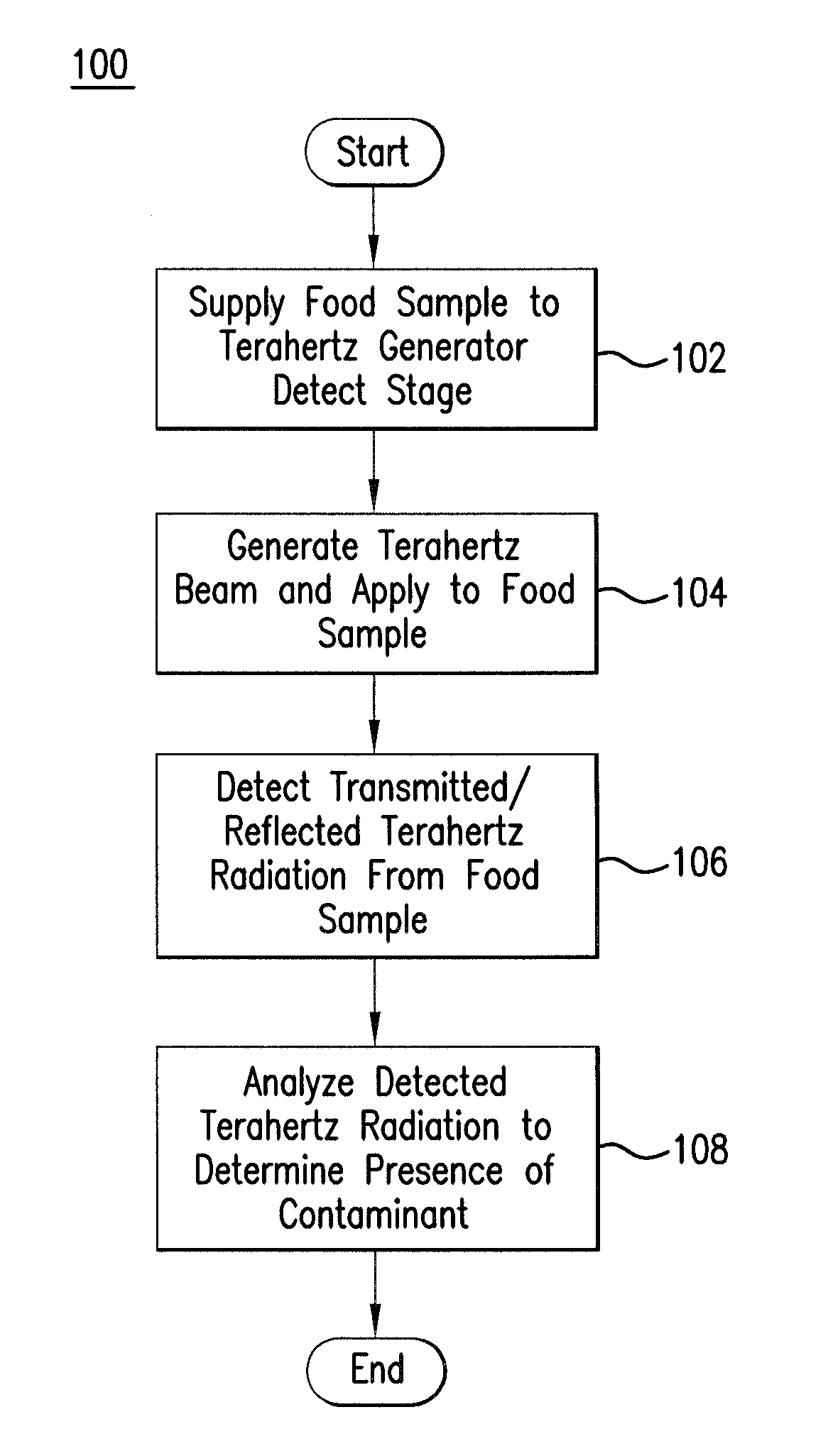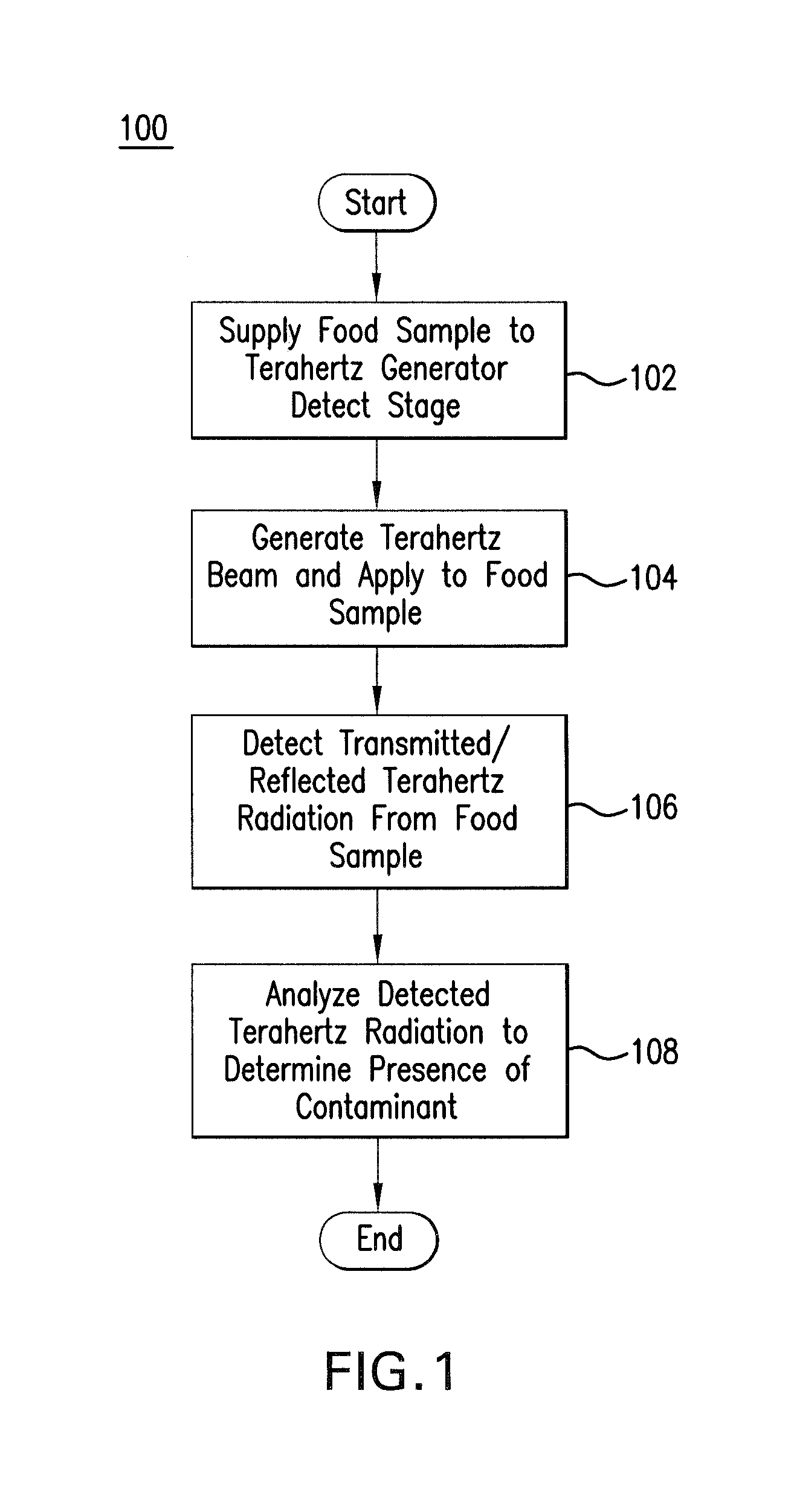Method of detecting contaminant materials in food products
a technology of contaminant materials and food products, applied in the field of detecting contaminants, can solve the problems of widespread food safety scare, disease or death in people and animals, and death in china
- Summary
- Abstract
- Description
- Claims
- Application Information
AI Technical Summary
Benefits of technology
Problems solved by technology
Method used
Image
Examples
Embodiment Construction
[0022]Details of the present invention will now be described, including example aspects and embodiments thereof. Referring to the drawings and the following description, like reference numbers are used to identify like or functionally similar elements, and are intended to illustrate major features of exemplary embodiments in a highly simplified diagrammatic manner. Moreover, the drawings are not intended to depict every feature of actual embodiments or the relative dimensions of the depicted elements, and are not drawn to scale.
[0023]Various techniques are described for detecting a contaminant material in a food sample. These techniques generally include irradiating a food sample with an optically generated beam of Terahertz (THz) electromagnetic radiation. While the THz radiation may span the entire THz spectral range (e.g., about 100 GHz to about 3 GHz), preferably only the lower portion of that THz frequency range (i.e., about 100 GHz to about 2 THz) is used. Once the sample is i...
PUM
 Login to View More
Login to View More Abstract
Description
Claims
Application Information
 Login to View More
Login to View More - R&D
- Intellectual Property
- Life Sciences
- Materials
- Tech Scout
- Unparalleled Data Quality
- Higher Quality Content
- 60% Fewer Hallucinations
Browse by: Latest US Patents, China's latest patents, Technical Efficacy Thesaurus, Application Domain, Technology Topic, Popular Technical Reports.
© 2025 PatSnap. All rights reserved.Legal|Privacy policy|Modern Slavery Act Transparency Statement|Sitemap|About US| Contact US: help@patsnap.com



